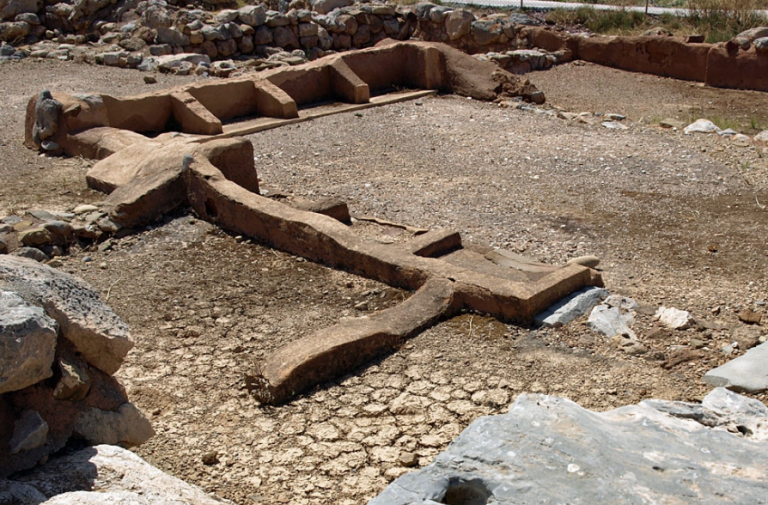In the southeastern reaches of Crete, a stone’s throw from Sitia and a journey away from Agios Nikolaos, the Minoan Palace of Zakros emerges as a testament to the architectural ingenuity and societal sophistication of the Minoan civilization. Discovered by Greek archaeologist Nikolaos Platonas in 1961, though its secrets began to unravel decades earlier, the palace stands as the last of the major Minoan palatial complexes to be unearthed, offering unique insights into the Bronze Age culture that thrived on this island.
Architectural Marvels and Societal Insights:
Mirroring the architectural blueprint of its contemporaries in Knossos, Phaistos, and Malia, the Palace of Zakros was meticulously designed with a central courtyard at its heart, flanked by a complex labyrinth of rooms, hallways, and ceremonial spaces, indicative of a highly organized society. Constructed in the 19th century BC and later refurbished around 1600 BC, its ruins recount tales of grandeur and the daily lives of its inhabitants.
The palace’s main entrance, oriented to the east towards the bay, signifies the importance of maritime activities and trade, while the western section of the palace housed the throne room, ceremonial hall, archives, and treasury, pointing to the administrative and religious functions central to Minoan leadership. The eastern section, with its royal apartments and bathing pools, alongside the northern wing’s storerooms and kitchen, and the southern crafts area, paint a picture of a vibrant community life centered around the palace.
Agricultural Prosperity and Cultural Riches:
Surrounding the palace was a thriving settlement, its prosperity underscored by agriculture, as evidenced by the discovery of cisterns, tools, and other artifacts. The array of jewelry, shrine fragments, and the remnants of Linear A inscriptions unearthed at Zakros provide a glimpse into the religious practices, craftsmanship, and perhaps even the bureaucratic workings of this ancient community, with many artifacts now preserved in the Archaeological Museum of Heraklion.
The Palace’s Untimely Demise:
Tragically, around 1450 BC, a devastating fire marked the end of the Palace of Zakros, leaving it uninhabited and sealing its fate in history. Yet, the ruins that stand today continue to captivate archaeologists, historians, and travelers alike, serving as a poignant reminder of the Minoan civilization’s achievements and mysteries.
Conclusion:
Exploring the Minoan Palace of Zakros is a journey back in time to an era of remarkable architectural mastery and societal complexity. The palace’s ruins, set against the backdrop of Crete’s rugged landscape, invite contemplation of the island’s ancient past and the civilization that once flourished upon it. As we walked the paths once trodden by Minoan royalty and commoners alike, the Palace of Zakros stood as a silent but powerful witness to the enduring legacy of one of history’s most intriguing cultures.
Sorry, no records were found. Please adjust your search criteria and try again.
Sorry, unable to load the Maps API.
